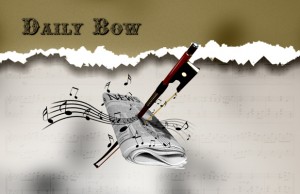Study Provides Breakthrough Information on Musical Synesthesia
Synesthesia is often a popular topic among musicians. We talk about tone color when we play is relates to the quality of sound produced with the instrument, but talk of associating music with colors brings a whole new dimension to descriptive side of music. People with synesthesia experience certain internal triggers when their senses pick up a sound or a word that cause them associate multiple senses with just one trigger: days have a certain flavor; individual numbers have certain colors. In music, many people claim that certain tonalities or notes cause them to experience colors, thus bringing the idea of tone-color to a completely different level.
Although research on synesthesia has grown over the years, the relationship between music and color has lagged behind other studies. Now a recent study is making up for that, providing fascinating information on what happens in the brains of people with synesthesia as they listen to music:
Synaesthetes showed significantly greater brain activity in an area called the inferior parietal cortex (IPC). The IPC is associated with many tasks including spatial-dynamic processing, mental imagery, attention control and visuo-motor control. It can be thought of as one of the important relay stations in the brain, where input from different sensory areas comes together for processing. The authors suggested that the hyper activity in this area might be behind the extrasensory ‘binding’ that is characteristic of ton-colour synaesthesia – coupling together trigger and response sensory areas via disinhibited feedback.
What this means is that the IPC, which is an area in the brain responsible for the perception of multiple senses, becomes overactive in synaesthetes, so that when they listen to music, the IPC starts to mix the sense of sight with what the listener hears. This binding of the two senses creates the tone-color experience that so many musicians are familiar with. But this is only the first step. There is plenty more to uncover about sound/color synesthesia and many amazing accounts to hear from people with this condition. Do any readers out there identify with this experience? What do you hear (or see!) when you listen to a piece of music? Comment below!















One theory on the cause is that newborns’ senses are not separated in their first months of life and are intermingled in a kind of “synaesthetic confusion.” Some researchers believe that people who experience synesthesia never had certain synapses separate when they were babies. And that’s why they cannot fully distinguish different senses.
Synesthesia is interesting because it highlights a subjective, psychological connection between color and music. And what’s really cool is that there is an objective, scientific connection between color and music, as well. In fact, they’re like two languages that tell the exact same story. Check it out: http://mycolormusic.com/about/color-music/
Just got a question. Whenever i listen to music or if i smell something then i tend to visualise it in my head, i dont actually SEE it infront of my face but i feel as if i see music in my head like i see the drums and snares and other instruments in my head as music is playing. Is thst synthesia??
No. That is Imagination filling in the blanks, I think most people see sounds this way. I see this is an old thread, sorry